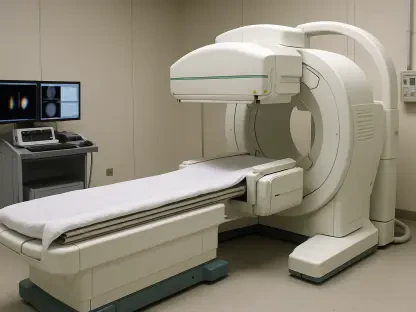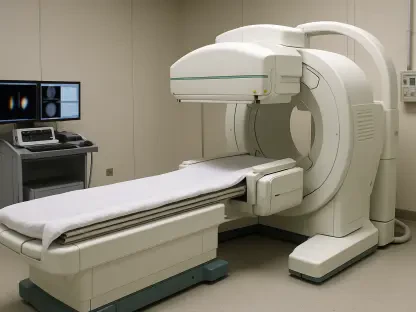I’m thrilled to sit down with James Maitland, a renowned expert in robotics and IoT applications in medicine, whose passion for integrating technology into healthcare has positioned him as a leading voice in the field. With the recent reinstatement of telehealth flexibilities following a historic government shutdown, James offers unique insights into how these policies impact virtual care, provider operations, and patient access. In our conversation, we explore the ripple effects of the shutdown on Medicare beneficiaries, the significance of revived programs like Acute Hospital Care at Home, and the ongoing push for sustainable telehealth solutions. Join us as we dive into the challenges and opportunities shaping the future of healthcare delivery.
Can you walk us through the impact of the recent government shutdown on telehealth services for Medicare beneficiaries?
Absolutely. The shutdown created a real mess for telehealth under Medicare. For six weeks, there was no clarity on whether providers would be reimbursed for virtual care services. This meant many Medicare beneficiaries, especially those in rural or underserved areas, couldn’t access the virtual appointments they rely on. It was a significant barrier, particularly for folks who can’t easily travel to in-person visits due to mobility issues or distance. Providers were stuck in a tough spot, deciding whether to keep offering services without guaranteed payment or to scale back, which directly hurt patient care.
How did telehealth providers navigate the uncertainty during this period?
Providers were essentially operating in the dark. Many faced a dilemmcontinue offering virtual care and risk not getting paid, or stop services altogether to avoid financial loss. Some, especially smaller practices, had to cancel telehealth appointments because they couldn’t afford to take the hit. Even those who kept going were under immense stress, not knowing if retroactive payments would come through. The new spending law did allow for back payments, which helped to an extent, but it didn’t erase the operational strain or the trust issues that developed with patients during that limbo.
What stands out to you about the telehealth flexibilities that were reinstated after the shutdown?
The reinstated policies are a lifeline for many. Key changes, like removing geographic restrictions, mean that Medicare beneficiaries aren’t limited to rural areas for virtual care access anymore—anyone, anywhere can connect with a provider. Also, allowing all eligible Medicare providers to offer telehealth broadens the pool of professionals available. This is huge for improving access, especially for specialized care that might not be available locally. These flexibilities, in place through January 30, are a step toward making healthcare more equitable, even if temporarily.
Can you tell us more about the Acute Hospital Care at Home program that was reauthorized in the spending plan?
This program is a game-changer. It allows hospitals to deliver inpatient-level care right in a patient’s home, which was initially rolled out during the pandemic. It’s beneficial for patients who can recover in a familiar environment, reducing stress and infection risks. For hospitals, it frees up beds for more critical cases. Having this option through January 30 is crucial because it supports a more flexible healthcare system, especially for those with acute conditions who don’t need to be physically in a hospital but still require intensive care.
How did the uncertainty during the shutdown affect the actual usage of telehealth services across the country?
The impact was stark. A report from Brown University showed a 24% drop in telehealth visits in early October compared to earlier months. Some states, like Florida and New York, saw declines closer to 40%. I think this comes down to a mix of provider hesitation—due to unclear reimbursement—and patients sensing that uncertainty. In areas with already limited healthcare access, this drop meant people just didn’t get the care they needed, whether it was a follow-up for a chronic condition or urgent consultation.
Why do you think short-term extensions for telehealth flexibilities create such frustration among providers and advocates?
Short-term extensions are like putting a Band-Aid on a broken leg. They keep things going for a bit, but there’s no stability. Providers can’t plan long-term—whether it’s hiring staff, investing in technology, or expanding services—when they’re constantly facing expiration dates. Advocates, like those from the American Telemedicine Association, have pointed out that “the clock is ticking,” meaning every extension just pushes the problem down the road. It’s exhausting and disrupts the continuity of care that patients depend on.
What would a long-term solution for telehealth coverage under Medicare ideally look like in your view?
A long-term solution would mean making these flexibilities permanent, full stop. That includes codifying the removal of geographic barriers and ensuring all eligible providers can offer virtual care without looming deadlines. It would give providers the confidence to build robust telehealth programs and integrate them fully into their practice. For patients, it means consistent access, no matter where they live or what political gridlock happens in Washington. Advocates argue, and I agree, that short-term fixes aren’t sustainable for a model that’s now a core part of how we deliver healthcare.
What is your forecast for the future of telehealth policies in the coming years?
I’m cautiously optimistic. Telehealth has bipartisan support, which is rare these days, and the public demand—especially from rural communities and aging populations—is undeniable. I think we’ll see a push toward permanence within the next few years, but it’ll depend on Congress getting past funding disputes and prioritizing healthcare over political games. Technology, like robotics and IoT, will also play a bigger role in making virtual care more effective, potentially tipping the scales toward broader acceptance. The challenge will be ensuring equity so that tech advancements don’t leave vulnerable populations behind.









